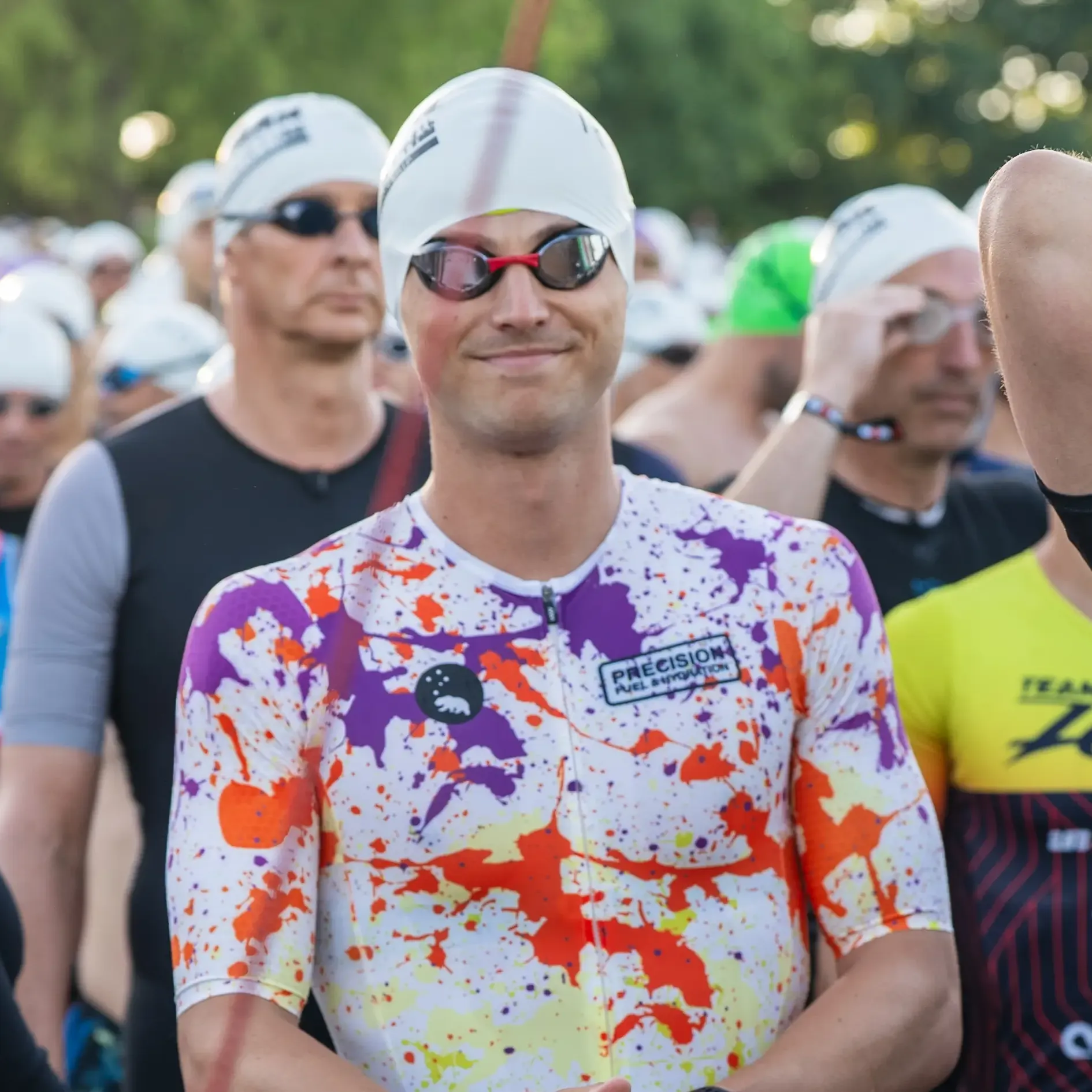
Raff Hussey
IRONMAN® Maastricht
Raff's headline numbers
Raff's strategy
Fueling
Carbohydrate is the main fuel you burn when racing. Failing to fuel properly is a leading cause of underperformance in longer races.
With the help of his colleagues in the Sport Science team, Raff went into his first IRONMAN® with a clear fueling plan. He aimed to ‘front load’ his intake on the bike to be able to consume slightly less on the run and hopefully avoid GI discomfort. Despite dropping a PF 90 Gel, this strategy was successful and he consumed ~104g/h through the 180km ride. Luckily, he adapted well ‘on the fly’ to dropping his gel by picking up bananas from aid stations. On the run, Raff ended up maintaining an impressive intake of ~82g/h through various gels and bars ensuring he avoided flavour fatigue. He experienced some heaviness in his stomach in the later stages on the run which he attributed to the energy bars from aid stations that he had not practiced with. This reinforces the importance of only using what you know (and have practised with) on race day.
Hydration
Taking on board an appropriate amount of fluid and sodium is essential to maintaining blood volume and supporting the cardiovascular effort needed to perform on race day.
Whilst the absolute amount of sodium and fluid consumed per hour is important, it’s critical to consider these in relation to each other. This is known as 'relative sodium concentration' and it’s expressed in milligrams per litre (mg/L). How much sodium you’re taking in per litre of fluid is more important than the absolute amount taken in per hour.
Sweat sodium concentration (mg/L) is largely genetically determined and remains relatively stable. Knowing how salty your sweat is enables you to replace a good proportion of your sweat losses, which can range from 200-2,000mg/L.
Whilst Raff’s losses are on the low side, getting his hydration strategy right is still crucial when it’s hot and/or humid as his higher sweat rate in these conditions can result in significant net losses over the duration of a race.
Learn moreRaff has a low sweat sodium concentration and a relatively low sweat rate. This means his overall sweat losses were manageable even in the 27°C (~80℉) heat. Because he used PH 1500 (Drink Mix), a high strength electrolyte, he was able to maintain an adequate relative sodium concentration whilst consuming plain water and other fluids on top of this. He topped up his sodium intake with two Electrolyte Capsules to cross the finish line of his first endurance event cramp-free.
Caffeine
Beyond the Three Levers of Performance (carb, sodium and fluid), caffeine is one of only a few substances that is proven to improve performance for most endurance athletes as it can help stave off mental and physical fatigue.
Raff strategically used caffeine to reap the performance benefits of the stimulant. He followed his early morning coffee with a PF 30 Caffeine Gel in the final 20 minutes, allowing him to feel the effects through the swim. He had three more PF 30 Caffeine Gels over his 6 hour 40 minute ride. To maintain the ergogenic effects through the run, Raff had planned to consume a further three PF 30 Caffeine Gels but unfortunately left two of them in transition. Despite this, Raff’s overall caffeine intake still exceeded the recommended range of 3-6mg/kg, which is a common occurrence in endurance events lasting over 7 hours. Considering his tolerance for caffeine and having practiced with it, Raff’s strategy served him well on the day.
How Raff hit his numbers
Here's everything that Raff ate and drank on the day...
Raff's weapons of choice
Final thoughts
Raff's full stats
Data Confidence?
There is good confidence in the accuracy of the data reported. An athlete feels that the numbers closely reflect what they consumed despite a couple of estimations which may carry some degree of error. The majority of what was consumed is recorded to a high level of specificity (most volumes are known through the use of bottles brands quantities flavours). The numbers are very plausible and align with previous data recordings (if an athlete has collected data previously).